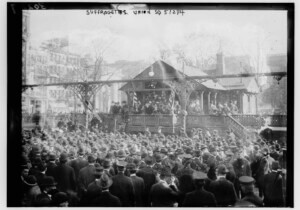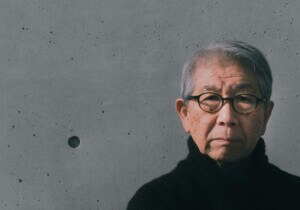Another year older. Another trip around the sun. AN editors have rounded up the top news stories of 2023. As in year’s past the roster includes openings and unveilings of anticipated buildings and stories at the intersection of architecture and politics, economics, and social issues that had us scratching our heads, sighing in disappointment (and relief!), and laughing until our stomachs ached.
In no particular order, from the weird and wacky to the downright serious, here are the top news stories of 2023 covered by AN. And stay tuned over the next week or so as we continue to look back and reflect on the past.
Snøhetta’s unsuccessful union drive
In the 2022 end-of-year news round up we praised Bernheimer Architecture for its success to unionize, a feat that made the Brooklyn office the first U.S. architecture firm to successfully do so. July 2023 saw another firm, Snøhetta, go through the process, albeit with a different outcome. The firm’s San Francisco and New York offices voted against unionization, 35-29.
In a statement shared with AN following the vote, a Snøhetta spokesperson said: “After a months-long campaign by the Machinists to unionize Snøhetta in the U.S., the majority of employees made it clear that they opposed this direction for our workplace. We look forward to working together as one studio to continue building on our legacy of creativity and collaboration.” After news of the vote circulated, the Architecture Workers Union shared on Instagram that Snøhetta had retained Stinson LLP, a union-busting law firm, to drive opposition to unionization among workers.
At the end of August the AWU filed an Unfair Labor Practice (ULP) charge with the National Labor Relations Board against Snøhetta for “violating their employees’ rights under the National Labor Relations Act.” The ULP charge alleges there was unlawful discrimination “against several employees because of their support for union organizing.”
In other union news, in September, New York firm Sage and Coombe Architects announced it has recognized a union “requested by a committee of firm employees.”

David Chipperfield won the 2023 Pritzker Prize
David Chipperfield was named the 52nd recipient of the Pritzker Prize. The architect, urban planner, and activist was recognized for his timeless designs and sensitivity to social and environmental issues. Chipperfield grew up in Devon, England and went on to study architecture at the Kingston School of Art and the Architectural Association School of Architecture. In 1985 he opened his own eponymous studio, David Chipperfield Architects. Among his built projects are a number of designs for art institutions—Neues Museum in Berlin, Turner Museum, and Museo Jumex.
Chipperfield’s portfolio evinces his talent to work across myriad building typologies, among this civic buildings, commercial, residential and retail structures. A statement from the Pritzker jury lauded Chipperfield’s designs for their ability to bring together cities: “In short, his buildings embody a commanding balance of the seemingly contradictory notions of being complete in and of themselves as architectural designs where every detail is conceived as a carefully studied part of a whole, and at the same time create interconnections to the city and to the society in such a way as to fundamentally transform a whole district.”
The SVB and Signature bank collapses ensued panic
In mid-March panic set in among financial circles when Silicon Valley Bank (SVB) and Signature Bank collapsed, marking the third-biggest bank failure in U.S. history. Financial experts attribute the sudden collapses to SVB funneling money into government bonds; this coupled with rising interest rates caused bond prices to dip and borrowing prices to go up. SVB clients began withdrawing their money with haste, as did those with money in Signature Bank.
It wasn’t just investors, lenders, and financial institutions left on edge, among SVB’s clients were a number of residential solar panel companies and affordable housing projects. And half of Signature’s lending was dolled out to real estate companies and developers focused on commercial buildings and multifamily housing.
David Adjaye was accused of sexual misconduct
An investigative report from the Financial Times revealed architect David Adjaye has been accused of sexual misconduct by three former female employees. The original reporting detailed the reports of three former female employees who worked with Adjaye. Adjaye denied the claims.
In a statement provided to AN from Kendal Advisory, a communications and crisis management firm, Adjaye said: “I absolutely reject any claims of sexual misconduct, abuse or criminal wrongdoing. These allegations are untrue, distressing for me and my family and run counter to everything I stand for. I am ashamed to say that I entered into relationships which though entirely consensual, blurred the boundaries between my professional and personal lives. I am deeply sorry. To restore trust and accountability, I will be immediately seeking professional help in order to learn from these mistakes to ensure that they never happen again.”
As news of the allegations circulated a number of projects severed ties with Adjaye and his firm Adjaye Associates. Toni M. Isidore Smart, one of the survivors of alleged sexual misconduct shared a statement about her experience on Instagram. Her words link the allegations to larger issues related to work and labor in architecture.

Eric Owen Moss’s (W)rapper building captivated, for better or worse
This year saw the opening of the (W)rapper, a 16-story office tower in in Culver City, California designed by Eric Owen Moss. The building is recognizable from its facade of steel tubes, which play a crucial role in the building’s ability to stand free of columns on its floor plates. The floor heights vary from 13.5 to 24 feet. The lack of columns in the interior spaces gives the office building a warehouse feel.
In a review of the (W)rapper for AN, Ryan Scavnicky wrote: “Seen at a distance, the building is a disagreeable, clunky, loud, uncomfortable hot mess. Yet encountered up close, parts of it are captivating.”
Boston arrested the “cop slide”
Continuing the playful note, this summer a video of a cop tumbling down a slide in the recently opened, Sasaki-designed plaza outside Boston City Hall became a viral sensation.
Boston Mayor Michelle Wu told local reporters, following the incident, “We want all of our public spaces to be beloved, and if it looks like we need to make sure there’s more signage that ‘this is for children’ or something, we can do that too,” she said. “But we want everyone to have access to all of the spaces we’ve been creating across the city.”
Following the tumble and internet fame the city barricaded the slide, closing it off to those seeking their own moments of fame with the fabled piece of playground equipment. Reviews of the playground on Google poke fun at the viral event. The slide has since reopened.
Las Vegas opened its Sphere, and other cities ponder whether to follow suit
One of the most-anticipated built works of the year was the Populous-designed, sphere-shaped entertainment venue in Las Vegas. The orb opened this fall with a concert from U2. When the project completed this past summer, images of its illuminated exterior circulated online, even prompting some users to render their own design for the skin of the building. This week Sphere Entertainment and design firm ICRAVE gave a look at the interiors.
Other cities are similarly pondering their orbs. In London, a similar design from MSG and Populous has raised concerns in the neighborhood over noise and light pollution. In South Korea MSG is behind an idea to make a sphere in Hanam for K-pop artists to perform in. Another proposal in West Hollywood posits a 2,500-square-foot, orb-shaped broadcast studio slash digital billboard for Sunset Boulevard.

New York City opened three new cultural institutions: Powerhouse Arts, the Gilder Center, and Perelman Performing Arts Center
Three major cultural institutions in New York City opened in 2023. In Brooklyn renovation work concluded on Powerhouse Arts, the adaptive reuse of a former power station shepherded by Herzog & de Meuron. Abutting Central Park is Studio Gang’s Gilder Center, an addition to the Museum of Natural History, which dazzled and formally introduced the architecture world to shotcrete. Downtown, steps away from the World Trade Center, the REX-designed Perelman Performing Arts Center opened in all its illuminated marble glory.
At Powerhouse Arts within the former boiler house a new six-story annex emerges. The former power station now houses art studios and fabrication shops just for about any art medium you can think of. The Gilder Center, first and foremost, addresses the Museum of Natural History’s circulation problems. Its cavernous appearance is an obvious reference to the geodes and other natural objects displayed in its galleries.
In Lower Manhattan the Perelman delivers good on a 20-year-old promise to bring arts to the site of tragedy with a cube clad in 4,896 pieces of marble. While its exterior marvels, inside the mechanical workings of the theaters it houses have the capability to pull the theater into 62 configurations.
Frank Lloyd Wright’s TSOA departed Arcosanti for an arts compound in Scottsdale, Arizona
After a few turbulent years the The School of Architecture (TSOA), a 90-year-old institution founded by Frank Lloyd Wright, announced its would be moving “the bulk of its activities” from Arcosanti, Arizona, where its residence has been since 2019, to the Cattle Track Arts Compound in Scottsdale.
Back in 2020, the school announced it would likely close. This news drew significant backlash and the school remained in operation and changed its name from the School of Architecture at Taliesin to TSOA. That year, it also moved its summer classes from Taliesin West to Arcosanti.
TSOA and Wright have existing ties with Cattle Track. The compound was founded by George Ellis, the engineer behind the construction of Frank Lloyd Wright’s Rose Pauson house in Phoenix. Also students have used fabrication labs at Cattle Track for thesis projects.
Stephanie Lin, TSOA’s dean said of the new location: “Cattle Track has the best of both worlds: a distinctive place to spread out and experiment with hands-on building while also being highly convenient to resources and personnel needed to support a program of our kind.”











